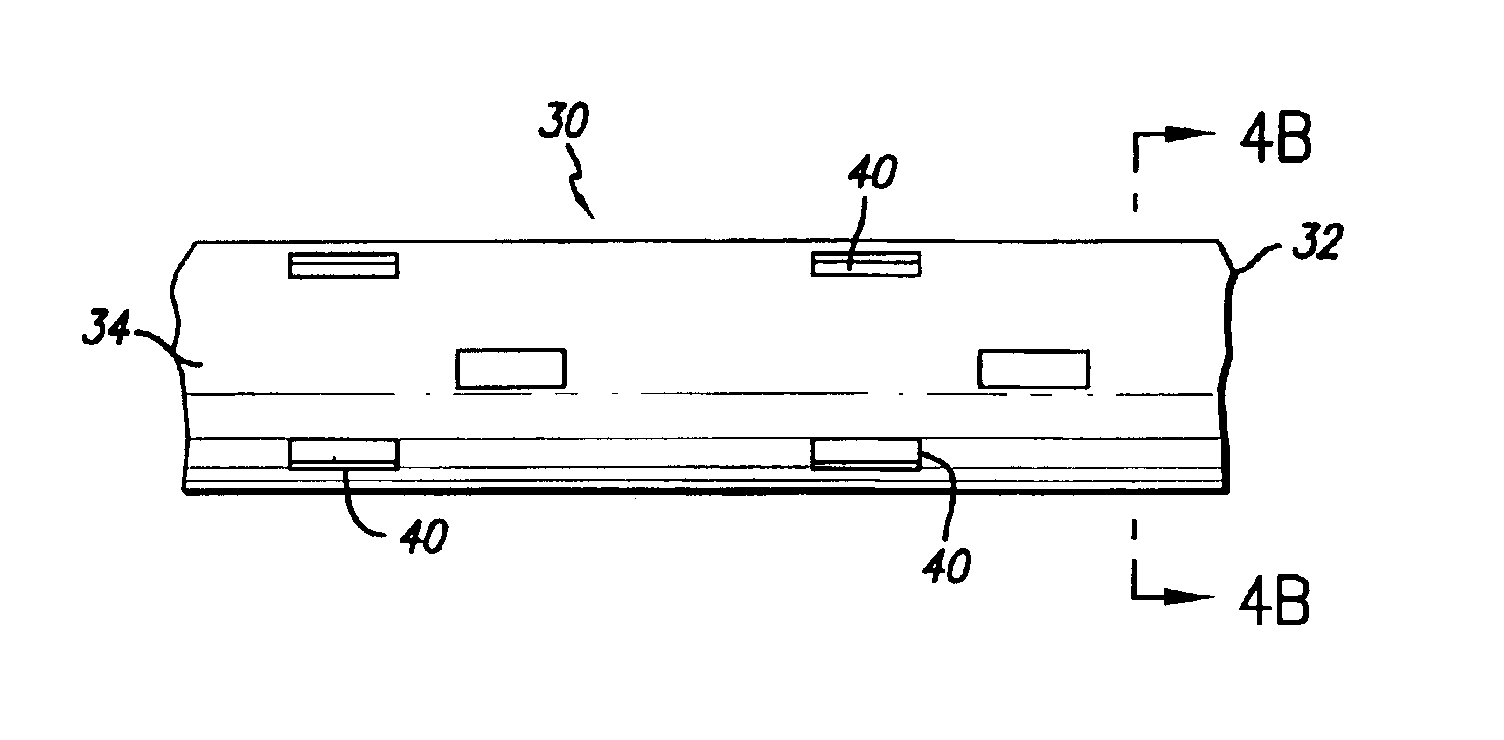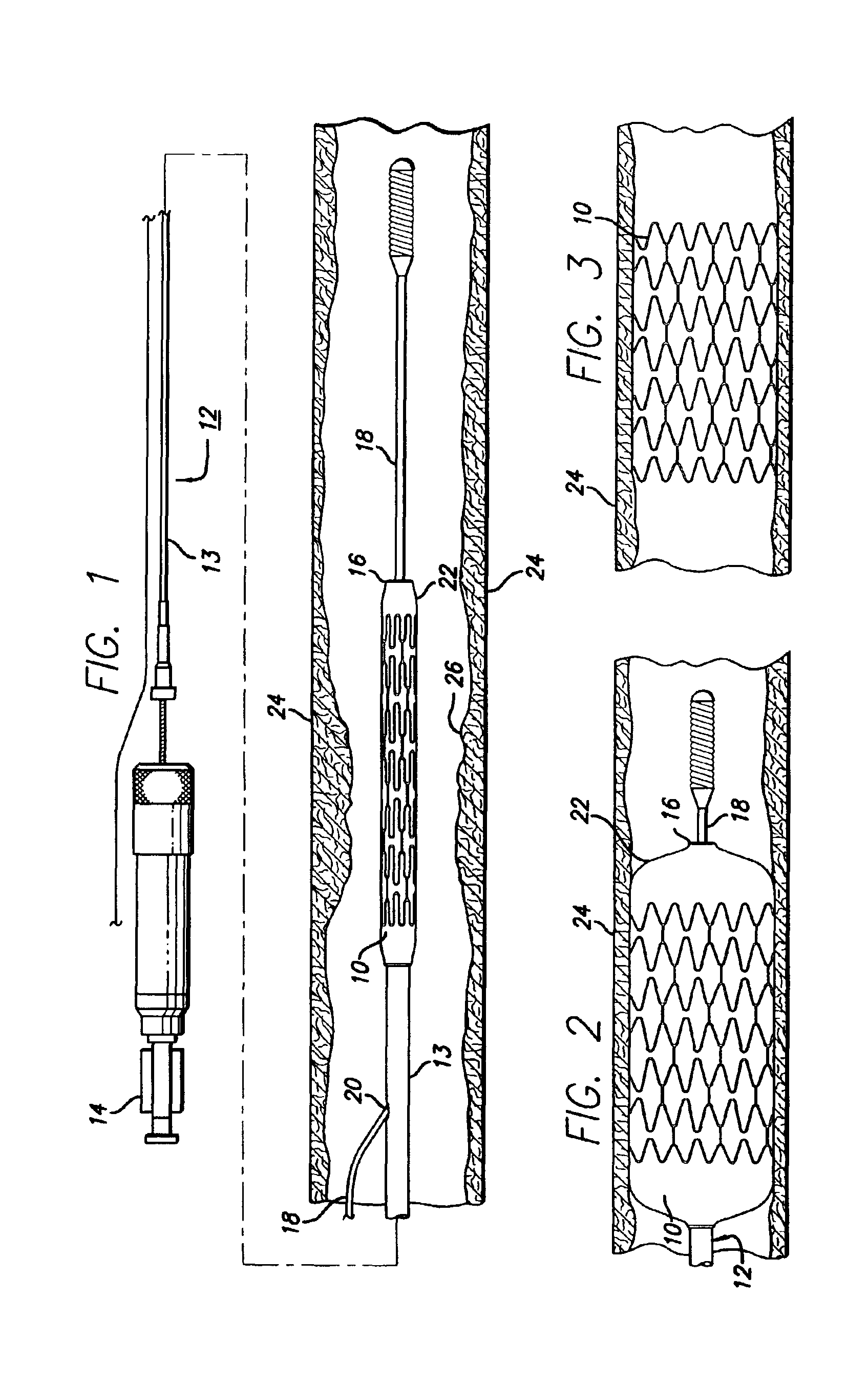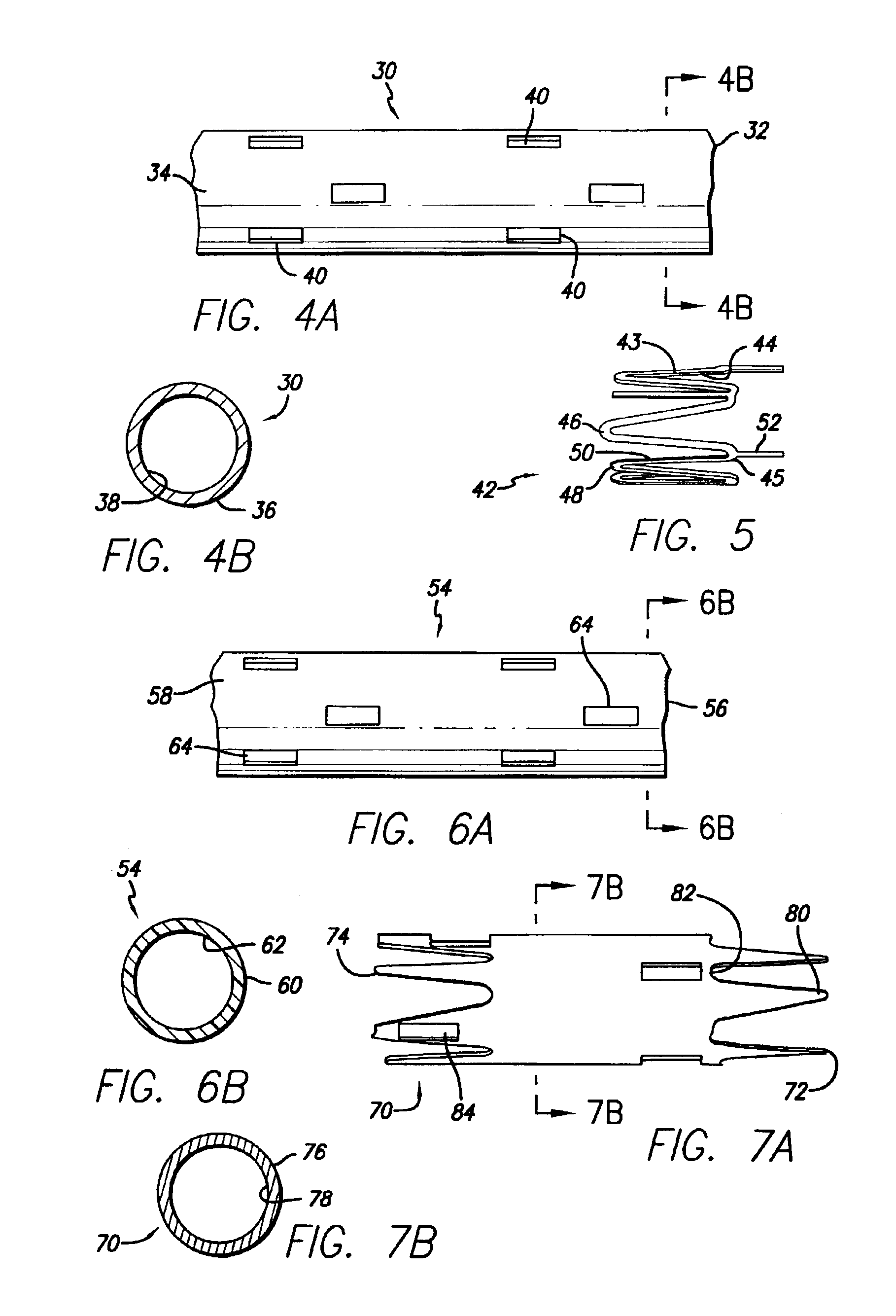Apparatus and process for electrolytic removal of material from a medical device
a technology of electrolysis and medical devices, applied in electrolysis processes, electrolysis components, manufacturing tools, etc., can solve the problems of increased frictional obstruction during insertion and excess drag, damage to the endothelium lining the vessel wall, and damage to the underlying inflation balloon
- Summary
- Abstract
- Description
- Claims
- Application Information
AI Technical Summary
Benefits of technology
Problems solved by technology
Method used
Image
Examples
Embodiment Construction
[0032]The present invention relates generally to the electrolytic removal of metal from selected portions of a device, typically a medical device, while the remaining portions of the device are not treated. More particularly, the present invention is suitable for treating selected portions of a stent for use in the vascular system, such as coronary stents or peripheral stents. The invention, however, is not so limited and has a wide application with respect to medical devices or any products where the surface of the device is to be micro-machined without machining the rest of the device.
[0033]With the present invention, it is possible to selectively remove metal portions of stent rings that will be used to fabricate an intravascular stent. Typically, coronary stents for example, are laser cut out of a stainless steel or cobalt-chromium tube that is between 0.004 inch and 0.010 inch thick (0.102 and 0.254 mm, respectively). After laser cutting the tube, there are surface burrs, scali...
PUM
| Property | Measurement | Unit |
|---|---|---|
| Fraction | aaaaa | aaaaa |
| Fraction | aaaaa | aaaaa |
| Fraction | aaaaa | aaaaa |
Abstract
Description
Claims
Application Information
 Login to View More
Login to View More - R&D
- Intellectual Property
- Life Sciences
- Materials
- Tech Scout
- Unparalleled Data Quality
- Higher Quality Content
- 60% Fewer Hallucinations
Browse by: Latest US Patents, China's latest patents, Technical Efficacy Thesaurus, Application Domain, Technology Topic, Popular Technical Reports.
© 2025 PatSnap. All rights reserved.Legal|Privacy policy|Modern Slavery Act Transparency Statement|Sitemap|About US| Contact US: help@patsnap.com



